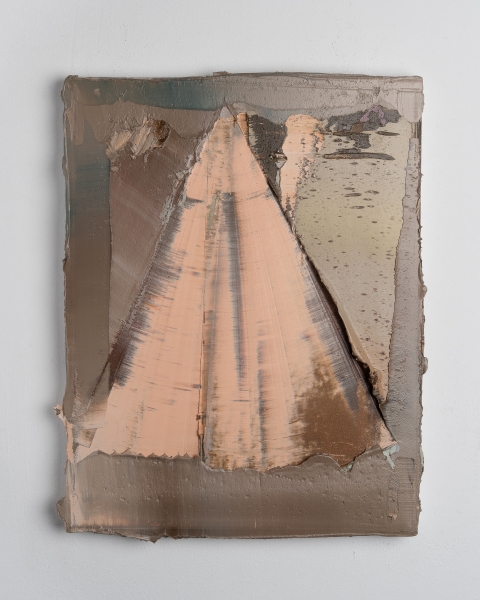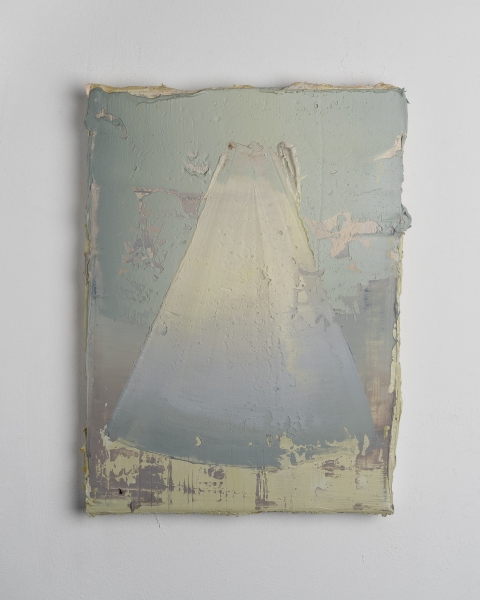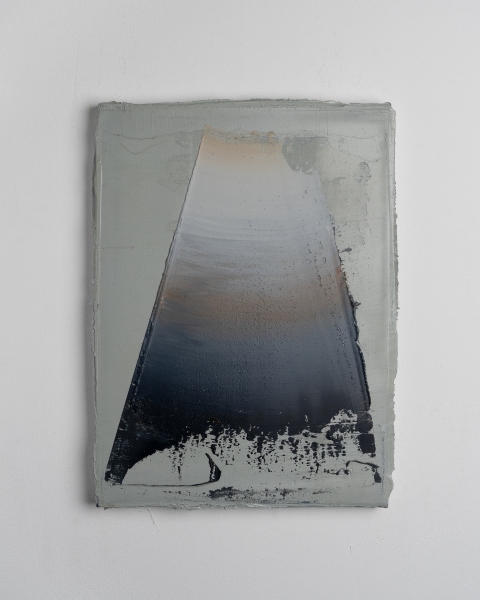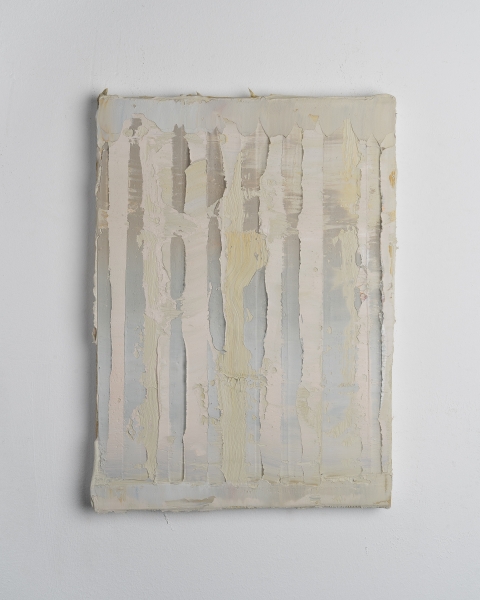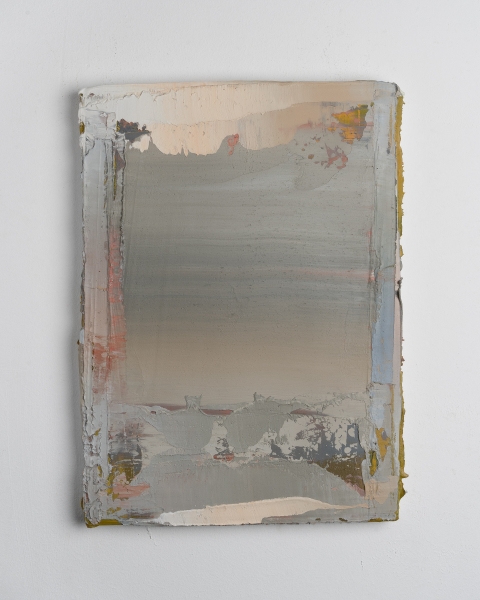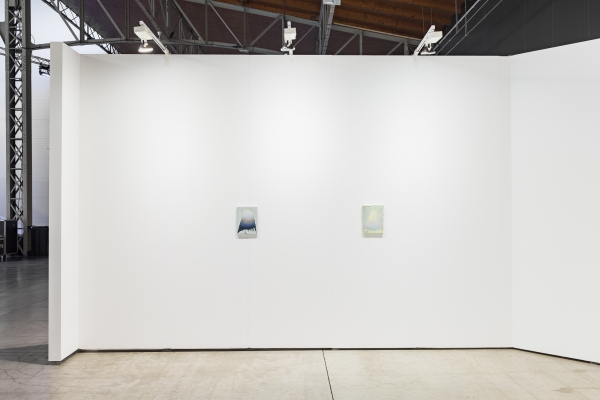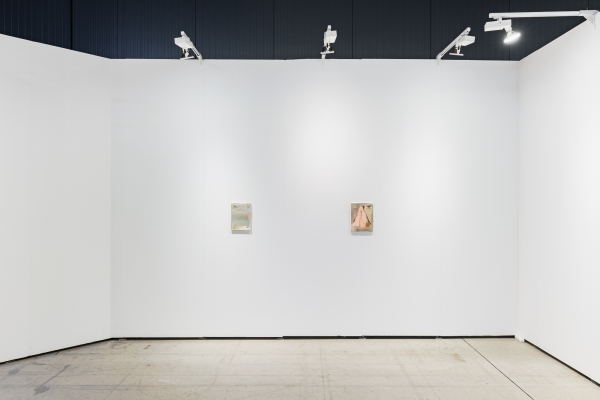Ecografías
Solo presentation at Spark Art Fair Vienna with Georg Kargl Fine Arts.
With the support of Institut Ramon Llull.
Medical imaging methods visualize the inside of the body, otherwise invisible to us. In prenatal diagnostics, they play an essential role in the form of ultrasound examinations or magnetic resonance imaging: as abstract images of life beneath the skin.
Mercedes Mangrané’s painting is fundamentally interested in the genesis of the picture as an abstract composition and intuitive evocation of representationalism, for that which is neither a clear figuration
nor remaining in the abstract. She shows with her new works an approach to what cannot be seen independently of the technological apparatus but can nevertheless be grasped intuitively: the translation of sensual perception into the texture of the color, the implied form.
Her own pregnancy and the confrontation with procedures of medical visualization made her think about how painting can be transformed into a vibrating something that, apart from a tangible image, is able to evoke the sensation of simultaneous seeing and feeling. Here the image of the ultrasound, there the somatic knowledge of what is happening in your own body. An image that pretends to depict something that actually remains hidden encounters a painting that, with its broken surface, its cuts and injuries, the opening and closing of the overlying layers of paint, refers to the fundamental impossibility of such an image.
Mangrané’s small-format paintings, which always have an object-like character through the impasto application of paint, motivates a way of seeing that allows other forms and states to be recognized far beyond what is currently visible. Just as the sound waves of the ultrasound create seemingly porous layers of gray tones, a plastic color space is formed in Mercedes Mangrané’s compositions by the movement of the spatula, which opens the view to what at the same time eludes it.
In Spanish, the adjective “ingrávida” means something weightless. “Grávida”, on the other hand, stands for what has weight: the pregnant body. Mercedes Mangrané makes the imaginary of her body, with its heaviness and lightness, the subject of a painting that plays with its own limits, that goes beyond its frame, whose surface is opulently furnished with color or only knows a delicate application.
“A pouch filled with liquid. A bag that carries a body. A painting that becomes a body,” is how she describes her work Bolsa/Bag (2022). In the series Sights (2022) there are hints of diagnostic imaging screens that explore the terrain of the imagination to plumb the unknown. However, the image surface also evokes a body and opens up to the expectation that follows the desire for knowledge and that of the gaze. In this way, two opposing languages meet: that of a material painting that condenses, creates a frame or a structure, and that which undermines it, evades it, and creates an idea of distance or even absence.
Mangrané’s pictorial spaces are rich in their material quality and allusive in what they suggest rather than show: the simultaneity of a knowing feeling and a seeing understanding, that arise from completely different viewing regimes and yet superimpose one another in a complementary manner. In the floating space that they show, the vague perhaps achieves something like clarity—beyond the intellect and the mere sensual.
Vanessa Joan Müller.
